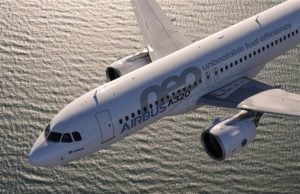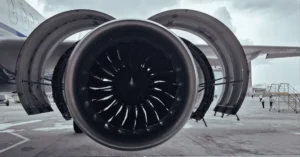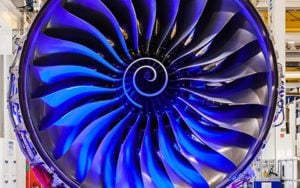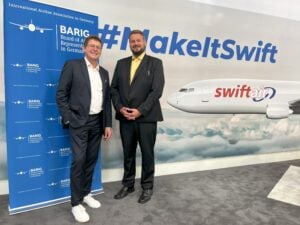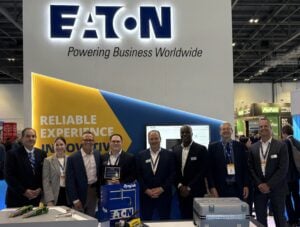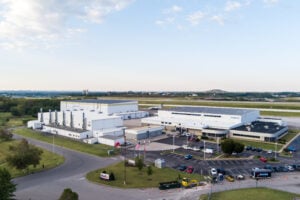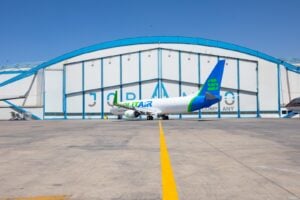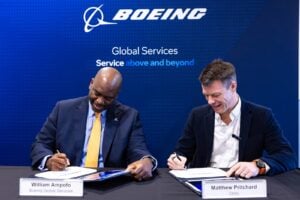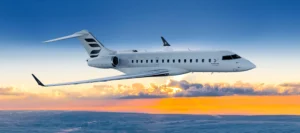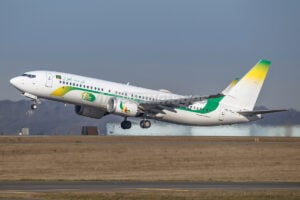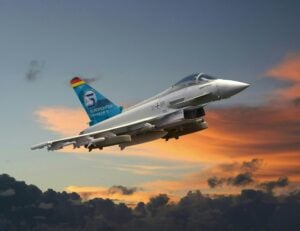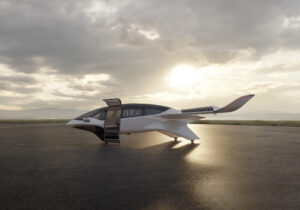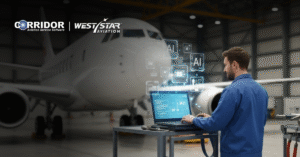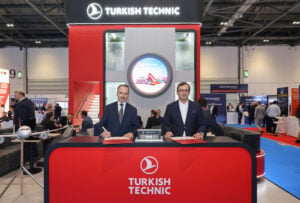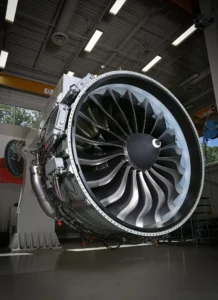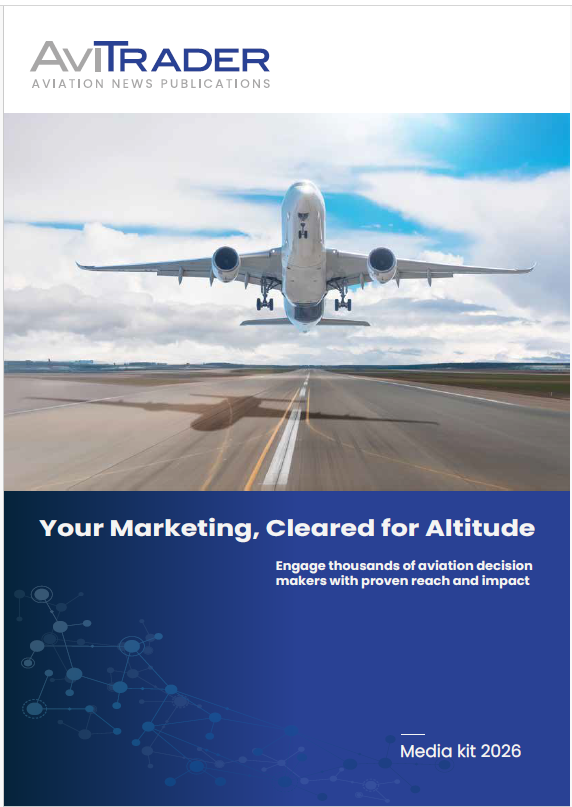An Insight Into Maintenance Management of Aged Aircraft Engines
By David Dundas
As technology changes and new materials are being used in the construction of aircraft engines, so these engines have a longer lifecycle and this, in turn, requires adapted maintenance management programmes. More recently, the considerable delays and backlogs relating to the delivery of new aircraft has seen the lifecycle of legacy aircraft extended, creating even more challenges for engine MRO specialists. To find out more about the challenges and vagaries of maintaining aged aircraft engines, we enlisted four of the industry’s leading engine MROs to share their thoughts with us.
What is classed as an aged aircraft engine and what challenges are associated with its maintenance?
For Virgil D. Pizer, Chief Executive Officer, Pem-Air Turbine Engine services: “An aged aircraft engine refers to one that has been actively used for an extended time, often surpassing its intended service life. This definition focuses more on its operational history— such as flight hours and the number of take-off and landing cycles—rather than its actual chronological age.” In terms of the unique challenges presented by aged engines, Virgil identifies corrosion and fatigue as ones which can lead to weakened metal components and the compromising of structural integrity. Where maintenance needs are concerned, shop visits tend to be more frequent and inspections more comprehensive, while there are also difficulties associated with finding spare/replacement parts. You then have to add rising costs through specialised repairs and increased labour hours with meeting new regulations that were not in place when legacy engines were produced and expenditure and retrofits and associated technology.
Abhijeet Dey, Director of Asset Management, Setna-iO LLC. is aligned with Virgil D. Pizer, advising that: “Aged engines are generally those motors that have been in service for a long period of time (hours /cycles). Such engines suffer internal hardware and performance degradation due to operational duress.” He adds that: “Most matured engines in today’s civil aviation industries have a fleet with a large number of aged engine still operating. The biggest challenges are keeping up with its performance and operational efficiency while keeping up with Maintenance cost and risk involved. In the case of aged, ‘matured’ engines, it is much about following a defined work scope generated over years of operational history of such engine types.”
At StandardAero, David Williams, Director of Global RB211 Sales adds an additional viewpoint in that as far as the industry is concerned, there is no formal definition of what constitutes an aged engine but he adds that a key common factor is often that the powerplant in question is no longer in production. “While on the one hand this means that operators no longer have to compete with the production line for parts, it may also mean that the OEM’s own supply chain focus has switched to newer models, resulting in longer parts lead times and sourcing challenges. Likewise, the OEM’s repair development focus may switch to newer powerplants, leaving operators reliant on third parties for new component repair schemes,” he says.
John McCarthy, Director Business Development, Europe, VAS Aero Services is more precise in his opinions of what constitutes an aged engine, with good reasoning: “VAS Aero Services views an aged aircraft engine to be typically in the range of 18 years or older, a generation of engines which were considered leading technology in the 1990s and having strong production rates through the 2010s. Likely its design and technology will be derived from the cutting-edge engineering of the 1970s and 1980s.” He then adds that “The unique challenge with older engines, in the event of problems with the engine, entails the decision between repairing or replacing the unit. This decision will be much more sensitive to the repair investments involved, including the lead-time to accomplish the full scope of work. An unplanned expensive shop visit will likely be the end of the engine’s operational life.”
Strategies which have proven most effective in extending the service life of older engines
On the operational side, engine derating and economical flight routes often play a key role to ensure the lengthening of the on-wing time of engines. In the opinion of Abhijeet Dey, it is also important to keep “the engine’s internal hardware up to date with latest SBs and ADs as well as ensuring that regular maintenance is carried out (enhanced condition monitoring). Also, it has been observed that many operators who had gained in-depth experience of operating such engine types ensures a regular communication with the OEM to keep the MPD task updated/revised based on their operational experience.”
One strategy undertaken by OEMs can be to team up with a trusted MRO provider, who then becomes the end-of-life engine maintenance service partner for an aged engine. According to David Williams, “Rolls-Royce has taken this approach on the RB211-535 turbofan, which powers over 60% of the 530+ Boeing 757s still in service, selecting StandardAero as its life-of-type partner for the engine in 2018.” On the other hand, John McCarthy succinctly concludes that: “Optimum use of on-wing maintenance has proven very effective in extending the life of older engines. Procedures such as top and bottom case blade replacement and boro blending will optimize an engine’s life while avoiding the considerable costs of an engine shop visit.”
Virgil D. Pizer provides a comprehensive list of strategies to be adopted, advising that conducting regular and detailed inspections enables the early detection of wear and tear, corrosion, and fatigue damage, while utilising premium lubricants and conducting regular oil changes can greatly minimise engine wear. He also suggests that regularly performing overhauls and reconditioning of engine components can rejuvenate performance and prolong the engine’s lifespan, while adopting modern technologies like advanced monitoring systems and diagnostic tools can enhance engine performance and foresee potential failures before they happen. He mentions that certain operators collaborate with engine manufacturers to prolong the time between overhauls (TBO) by demonstrating reliability and adhering to proper maintenance protocols, and that modifying flight operations to lessen engine stress, like optimizing take-off and landing procedures, can help reduce wear and prolong the engine’s life. He concludes that: “By implementing these strategies, airlines and maintenance providers can successfully prolong the service life of older aircraft engines, ensuring both safety and reliability while efficiently managing costs.”
Engine types best suited to increased use of used serviceable material (USM)
USM can be a valid option for operators facing long lead-times for new parts, especially when operators have specific requirements for how many cycles remaining they want out of their engines. A key driver with regards to the use of USM is – of course – the availability of good quality material, i.e., from retired engines. David Williams explains further. “As such, a well-structured fleet retirement by a major airline with good maintenance practices will often result in the most attractive pool of USM, e.g., compared to aircraft (and engines) which have seen use with multiple operators, and which are thoroughly worn out by the time they reach the boneyard. Older types will occasionally come back into demand as a result of operational issues with newer models, which may then limit the availability of good quality USM. This has recently been the case with the A320 / B737NG and the CFM56-5B/7B / V2500, following the in-service issues affecting the A320neo and 737 MAX.”
Virgil D. Pizer provides some excellent examples of older engine types that lend themselves well to the increased application of USM, such as the CFM56 Series of engines which is extensively utilised in both narrow-body and wide-body aircraft, resulting in a large availability of USM parts thanks to its widespread use over the years. He also includes the GE90 series employed on Boeing 777 aircraft and the V2500 Series which is predominantly used on Airbus A320-family aircraft. “Utilizing USM can result in substantial cost savings, with these parts typically being 60-80% less expensive than new OEM parts. Moreover, the ready availability of USM parts assists airlines in controlling maintenance costs and minimising downtime,” he concludes.
Beyond the CFM56, GE90 and V2500 series of engines, Abhijeet Dey also includes the PW4000 and CF6-80 on the list of engine types, pointing out that such engine programmes have the following factors working in their favour:
- A significant number of engines have been retired and torn down
- There are multiple options for component repair due to the availability of many repair facilities
- There are fewer OEM-driven USM programmes
- There is easy availability of USM to assist in rebuilding of engines or for any MRO shop visits
- The development of multiple OEM-approved repair programmes for USM
John McCarthy is of the opinion that the cost-saving benefits of using USM parts can be applied to almost all engines at all stages of life. He points out that “USM continues to be a preferred choice for mid-life and mature engine platforms due to its cost savings and just-in-time availability. As a leading supplier of USM from engine teardowns and surplus inventory re-distribution, VAS provides ready access to critical USM engine parts to aircraft operators around the world.”
What should we take into account when replacing life-limited parts?
In an ideal world, when replacing an LLP, the LLP’s remaining life would be matched to the expected remaining life of the engine. In some cases, an LPT module replacement can be planned into the programme, which means that out-of-life sequence LLPs can be used. John McCarthy suggests that: “If there are LLPs in the engine that have far more life than the expected life of the engine, the operator should consider exchanging these for more optimised LLPs. The advanced USM community is very capable of capitalising on situations like this.”
Virgil D. Pizer looks at the situation in close up, identifying eight key factors which should be considered to ensure safety, compliance, and cost-effectiveness:
- Adherence to Regulations: Confirming that the replacement parts comply with aviation authority regulations, such as those set by the FAA or EASA.
- Part Quality and Certification: Ensuring the use of only certified, high-quality parts that have undergone rigorous testing and received approval for use.
- Compatibility: Ensuring that the replacement parts are compatible with the existing engine and its components.
- Remaining Life: Taking into account the remaining service life of the replacement part.
- Cost Considerations: Assessing the expenses related to replacement parts and their associated maintenance.
- Documentation and Traceability: Ensuring thorough documentation and traceability for all replaced parts.
- Manufacturer Recommendations: Following the manufacturer’s recommendations for replacement intervals and procedures.
- Operational Impact: Evaluating how the replacement will affect the aircraft’s operational schedule.
As already noted, some operators will have specific requirements for cycles remaining, based on their expectation of how long an aircraft will remain in service, which will determine the choice of new parts versus USM. As David Williams points out: “Where USM is utilised, it is of course essential that operators have full ‘back to birth’ traceability for any LLP, in order to ensure the integrity of the components in question.” On a different tack, Abhijeet Dey is keen to point out that one of the key factors “…will be to determine how many cycles of on-wing green time are we looking to attain from the engine. In theory the second-run engine always has lesser time on wing (TOW) as compared to first-run engines. So, to install NEW LLPs or high CR LLPs in such engines will not be economical. The cost-to-cycle ratio is the most important factor when it comes to LLPs.”
The main challenges maintenance teams face when sourcing parts for older engines
According to David Williams at StandardAero: “one of the biggest frustrations faced when sourcing parts for older engines is facing the scenario where the rebuild of an engine is held up by a handful of components (or just a single obscure part). This of course highlights the importance of kitting an engine prior to commencing work on it, and – in turn – of ensuring that Cycle 1 (inspection) activity is sufficient robust to anticipate the engine’s material requirements. In terms of sourcing parts, it’s important for supply chain teams to have a broad network of contacts with parts supply specialists and asset management companies, as those obscure parts can sometimes be found in the strangest places!”
Abhijeet Dey at Setna iO, LLC. Feels that many of the older engines have a lower mod status and when time comes for replacement of component for such engines, there might be a situation where either the component has become obsolete after the OEM has stopped production, no USM is available since older PNs have been upgraded due to SB / AD requirements, or some parts that are very old might not have the best trace documents. He comments: “Also, in some cases, the cost of such components might be really high due to limited availability and can cause financial distress for the operators/engine lessor.”
At VAS Aero Services, John McCarthy feels that one of the key challenges in the current market environment includes the availability of certain high-demand parts, pointing out that in many cases where USM parts are not available, maintenance teams must purchase new parts to complete maintenance events within contractual timelines. He adds that: “…depending on the part, it may be possible to realise residual value for the new parts when the engine comes to end of life,” while concluding that: “Establishing thorough engine documentation and shop visit records allows USM companies to better understand the optimal value of the engine.”
Virgil D. Pizer at Pem-Air Turbine Engine Services has created a shortlist of the main challenges, to include supply chain disruptions, high demand for USM, diminished availability, obsolete parts, cost, regulatory compliance, and documentation and traceability. “These challenges necessitate maintenance teams to be resourceful and proactive in sourcing parts, frequently depending on aftermarket suppliers, repair vendors, and innovative solutions to ensure the continued operation of older aircraft engines,” he advises.
At what point is an engine deemed “beyond economical repair” and should therefore be replaced?
This is partly a financial decision that takes into consideration the current book value of the engine, the maintenance event cost, and the projected value of the engine on its planned retirement, while another factor to consider is the likelihood of the engine running until its planned retirement and the potential to incur additional costs to keep it running. Additionally, an unplanned maintenance event close to retirement will result in a compromised financial situation.
As John McCarthy suggests, “It’s a balance of financial and engineering experience, and working closely with the USM community and engine shops to see where the optimum can be found. Experienced USM suppliers such as VAS can support airlines and lessors with tailored solutions to help them maximise the value of their engine assets.”
In general terms, an aircraft engine is considered “beyond economical repair” (BER) when the expense of repairing it surpasses the cost of replacing it with a new or refurbished engine. According to Virgil D. Pizer, this determination is generally based on a cost-benefit analysis that takes into account factors such as:
- Safety and Reliability: Confirm that the repaired engine adheres to all safety and reliability standards.
- Regulatory Compliance: Adherence to aviation regulations and standards. If repairs cannot guarantee compliance, replacement may be required.
- Repair Costs: The overall expenses associated with repairing the engine, encompassing labour, parts, and any additional testing or certification needed.
- Remaining Life: The anticipated remaining service life of the engine post-repair. If the engine has already gone through a significant portion of its lifecycle, investing in repairs may not be justifiable.
- Operational Impact: The downtime and operational disruptions resulting from the repair process. If the engine is vital to operations, the effects of prolonged downtime may sway the decision.
“When these factors suggest that repairs are not economically viable, the engine is classified as BER and should be replaced,” he concludes.
Meanwhile, David Williams advises that: “The calculation of whether an engine is BER will depend on the cost estimation performed after Cycle 1 (i.e. based on estimated new parts, USM and repair costs), and the customer’s own assessment of the engine’s economics. One customer may consider a repair estimate to render the engine BER, while a second may consider the bill to be acceptable, depending on their respective needs. Customers will sometimes ask an MRO to consider a ‘Frankenstein’ build, i.e. utilising multiple donor engines to create a single airworthy powerplant. This approach may or may not be economical, depending on the condition of the donors and the cost of disassembly and rebuild.”
Abhijeet Dey sums the situation up nice and succinctly: “If the business case for the engine repair is not viable enough to show positive revenue earnings, the engine can be declared as BER. At any given moment if the teardown value of the engine is more than the operational income of the engine, the engine should be taken off wing for part-out.”
Are there any restrictions regarding economic repair if it is a leased engine?
In David Williams’ opinion: “Lessors have an extremely good understanding of their assets, in terms of financial, technical and operational considerations. As such, a lessor will have a clear view of what represents an economical repair, and what numbers don’t work. Lessors may be less likely to accept the use of parts manufacturer approval (PMA) components, since this may impact the value of their assets and the willingness of certain end-users to lease them. Approaching the problem from a slightly different angle, John McCarthy believes that: “The decision to repair or not to repair is similar, whether the engine is owned by the operator or leased. If the repair cost does not make economic sense, it is common with aircraft leases for the Lessor to provide a replacement engine to power the aircraft to the end of the aircraft lease.”
Certainly, there are a number of restrictions when it comes to the economical repair of leased aircraft engines. These restrictions generally arise from the terms and conditions specified in the lease agreement between the lessor and the lessee. Virgil D. Pizer suggests these restrictions will be based on a combination of the lease agreement provisions, regulatory compliance, the Continuous Airworthiness Maintenance Programme (CAMO), and approval from the lessor. He rounds off by saying that: “It’s paramount to review the specific lease agreement and consult with the lessor to comprehend any restrictions or requirements related to the economical repair of leased aircraft engines.”
Clearly in the case of leased engines, the lease return terms and conditions are going to play a vital part. As Abhijeet Dey points out: “In such situations, the lessor has the final say if they want to proceed with utilisation of the accumulated maintenance reserve and LLP reserve for the proposed shop visit or just retire the engine. In the constantly evolving Aero Engine industry, the demand of particular engine type decides whether a US$5m shop visit is economical or if it renders the engine BER. He also points out that: “During the aftermath of COVID-19, a majority of first-run CFM56-7B engines were being retired due to low demand and were routed for teardowns. However, today, most of the 7Bs are now being routed for rebuild due to the high demand.”



